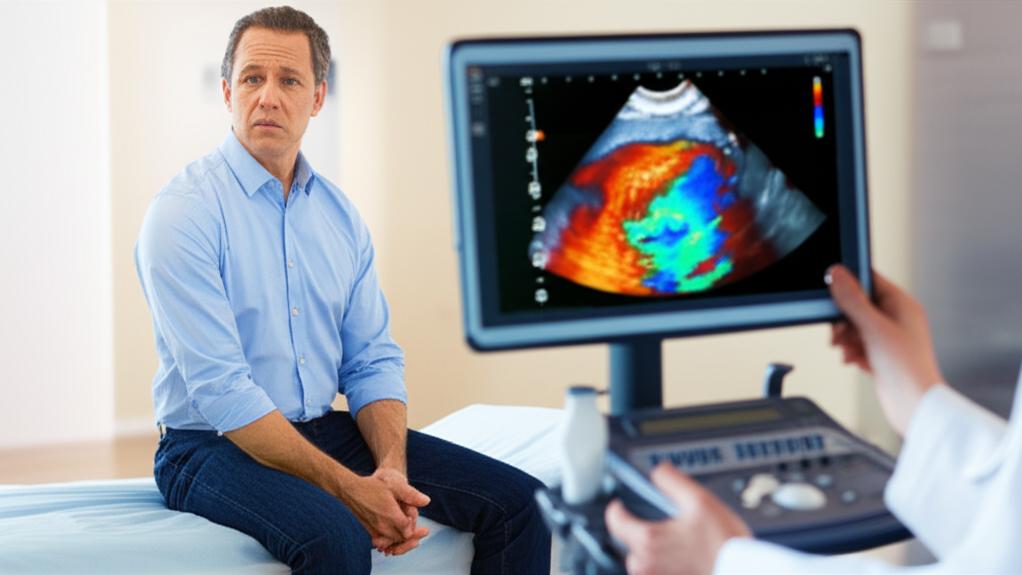Imagine you’re in for a check-up, maybe discussing a heart rhythm issue, and your doctor mentions your “right atrial appendage.” Sounds a bit like a forgotten room in a big house, doesn’t it? You might think, “A what now?” It’s not a part of the heart we talk about every day, like the main chambers or valves. But this little structure, often called the RAA for short, has its own job to do. And sometimes, yes, the right atrial appendage can be part of the picture when we’re figuring out what’s going on with your heart.
What Exactly is This Right Atrial Appendage?
So, what is this right atrial appendage? Think of it as a small, muscular pouch that sticks out from the right atrium – that’s the top right chamber of your heart. It’s usually found near a big vein called the superior vena cava, kind of peeking over a groove between the heart’s upper and lower right chambers.
It’s not just sitting there, though! Your RAA has an important function. When your heart senses too much blood volume, the walls of the RAA stretch and release special proteins called natriuretic peptides. These are pretty clever little messengers. They tell your blood vessels to relax and help your body get rid of extra salt and water through your pee. All this helps to bring your blood volume and pressure back into a better balance.
Inside, the RAA isn’t smooth; it has these muscular ridges – doctors call them the terminal crest and musculi pectinati. Gives it a bit of a rough texture. It has an opening, of course, so blood can move in and out. In terms of size, it’s not huge, maybe about half a square inch in area, with an opening less than an inch wide.
And, funny enough, they come in different shapes! The most common one looks a bit like a parrot’s beak. Others can be more like a horse head, an anvil, or even a sailboat. We’ve even seen some with multiple lobes – as many as six sometimes. Weird, right? But that’s the amazing variety of the human body.
When Your Right Atrial Appendage Might Need Our Attention
Now, like any part of your heart, the RAA can sometimes be involved in health issues. It’s not the most common troublemaker, but we keep an eye on it. Sometimes, the RAA is also a useful spot for us. For example, if you need a pacemaker, one of the leads (wires) might be placed in the RAA. It’s a convenient location for doctors to access, and it’s close to the heart’s natural pacemaker, the sinoatrial (SA) node, which sends out the electrical signals to make your heart beat.
Signs Something Could Be Up
If something’s amiss with your RAA, or related heart function, you might feel things like:
- A discomfort or pain in your chest
- Feeling unusually tired
- Getting short of breath (we call this dyspnea)
- Episodes of dizziness
These are quite general symptoms, I know, and can point to many things. That’s why if you’re feeling them, it’s always best to chat with us.
Common Conditions Involving the RAA
A few conditions we see that can affect the right atrial appendage include:
- Atrial fibrillation (Afib): This is an irregular heartbeat. Sometimes, with Afib, tiny blood clots can form in the RAA. It actually happens more often in its counterpart on the left side, the left atrial appendage, but it’s something we consider for the RAA too.
- Injuries: Say, from a significant impact like a car accident. The heart, including the RAA, can sometimes be affected by trauma.
- Aneurysms: This is when an artery wall gets overstretched and bulges. It’s rare in the RAA, but it is possible.
How We Check on Your RAA
To get a good look at your RAA and see what’s happening, we might suggest a few tests. Nothing too scary, just ways for us to see inside:
- Transesophageal echocardiogram (TEE): This is a type of ultrasound where a small probe goes down your throat. It gives us a really clear picture because it’s so close to the heart.
- Cardiac CT (Computed Tomography) scan: This uses X-rays to create detailed images of your heart.
- Transthoracic echocardiogram (TTE): This is the more common type of heart ultrasound, where the probe is moved over the outside of your chest.
We’d always talk you through which test, if any, is best for your situation.
Treatments We Might Discuss
If we do find an issue with your RAA, there are good ways to manage it. Treatment really depends on what’s going on:
- Anticoagulants: These are blood thinners. We might prescribe them if there’s a risk of blood clots, especially with Afib.
- Ablation: If Afib is found to be starting in the RAA, a procedure called ablation can sometimes be used. It involves carefully treating the small area of heart tissue causing the problem.
- Surgery: If the RAA is damaged from an injury, surgery might be needed to repair it.
Whatever the path, we’ll discuss all the options thoroughly so you feel comfortable and informed. That’s key.
Keeping Your Whole Heart Happy (Including Your RAA!)
You might be wondering how you can specifically take care of your right atrial appendage. Well, the good news is, that what’s good for your heart, in general, is good for all its little parts, including the RAA. It’s all connected!
So, the advice here is probably familiar, but it’s always worth a reminder:
- Stay active: Aim for about 150 minutes of moderate activity a week. A brisk walk, a bike ride, whatever you enjoy!
- Eat heart-healthy foods: Lots of fruits, veggies, whole grains, and lean proteins. Think colorful plates!
- Avoid tobacco: If you smoke, quitting is one of the best things you can do for your heart. We can help with that.
- Manage stress: Easier said than done, I know! But finding healthy ways to cope with stress – like mindfulness, hobbies, or talking things out – makes a difference.
- Keep other conditions in check: If you have things like high blood pressure or diabetes, managing them well is super important for your overall heart health.
Key Things to Remember About Your Right Atrial Appendage
Alright, that was a fair bit of information! So, let’s boil it down to the essentials about your right atrial appendage:
- It’s a small, pouch-like structure attached to your heart’s right atrium.
- It plays a role in managing blood volume and pressure by releasing certain proteins (natriuretic peptides).
- While not a common source of trouble, it can be involved in conditions like Afib or be a site for pacemaker lead placement.
- If there are concerns, tests like echocardiograms or cardiac CT scans can help us understand what’s going on.
- General heart-healthy habits are the best way to care for your entire heart, RAA included.
So, the right atrial appendage might be a lesser-known part of your amazing heart, but it’s there, doing its bit. If you ever have questions about it, or anything else heart-related, please don’t hesitate to ask. We’re here to help you understand your body better. You’re doin’ great just by learning more!


